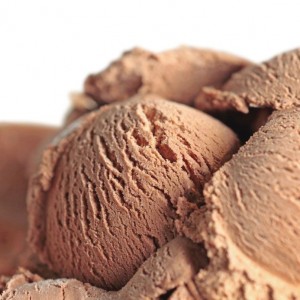
UNIVERSITY PARK – In light of the global obesity epidemic, many consumers and health professionals are concerned about the levels of added sugars in foods. Now, a study by Penn State researchers has shown that some consumers may not need all the added sugars in order to enjoy one of America’s favorite comfort foods: chocolate ice cream.
To make the inherent bitterness of cocoa in chocolate ice cream more palatable, manufacturers add high levels of fat and sugar, explained senior author John Hayes, assistant professor of food science and director of the Sensory Evaluation Center, Penn State College of Agricultural Sciences. Yet, he said, bitterness is an integral part of the complex flavor of chocolate.
In a new study published in the August issue of the Journal of Dairy Science, Hayes and colleagues report that consumers who prefer dark chocolate in solid form tolerate twice the amount of bitter ingredients in chocolate ice cream than those who prefer milk chocolate. The findings suggest that elimination of some added sugar and fats in chocolate ice cream may be acceptable — and perhaps preferable — to some consumers.
Once food manufacturers develop a strategy for balancing undesirable bitterness and the health concerns related to added sugars, they must determine whether the product will be acceptable to the consumer, Hayes noted. Thus, the purpose of this research was to manipulate the bitterness of chocolate ice cream to examine how this influences consumer preferences.
“Our primary goal was to determine whether rejection thresholds for added bitterness in chocolate ice cream could be predicted by individual preferences for solid milk chocolate or dark chocolate,” Hayes said. “Estimating rejection thresholds could be an effective, rapid tool to determine acceptable formulations or quality limits when considering attributes that become objectionable at high intensities.”
The research team produced a control sample of plain chocolate ice cream and samples with varying levels of sucrose octaacetate, a food-safe bitter ingredient used to alter the chocolate ice cream’s bitterness without disturbing the other sensory qualities of the samples, such as texture.
These samples were offered in pairs to 96 members of the Penn State community who were nonsmokers between the ages of 18 and 45. Forty-six participants preferred milk chocolate.
All participants were asked to indicate which of the two blind samples they preferred. They each tasted one spoonful of 10 different samples, rinsing with water between pairs.
As expected, the group that preferred solid dark chocolate showed a significantly higher rejection threshold — about twice as high — for sucrose octaacetate in the chocolate ice cream than the group that preferred milk chocolate.
“These results suggest that this approach could be used to make chocolate ice cream with less added sugar to be marketed for dark chocolate lovers, though this needs to be formally tested,” Hayes said. “Rejection thresholds also can be applied to other dairy foods in quality control or product optimization applications as a means to determine specific concentration limits associated with preferences.”
The research also demonstrated that the use of the rejection threshold methodology can be used effectively with solid, and not just liquid, foods, according to Hayes.
Other Penn State researchers on the study included lead author Meriel Harwood, who recently received her master’s degree in food science; Joseph Loquasto, doctoral candidate in food science; Robert Roberts, professor and head of food science; and Gregory Ziegler, professor of food science.